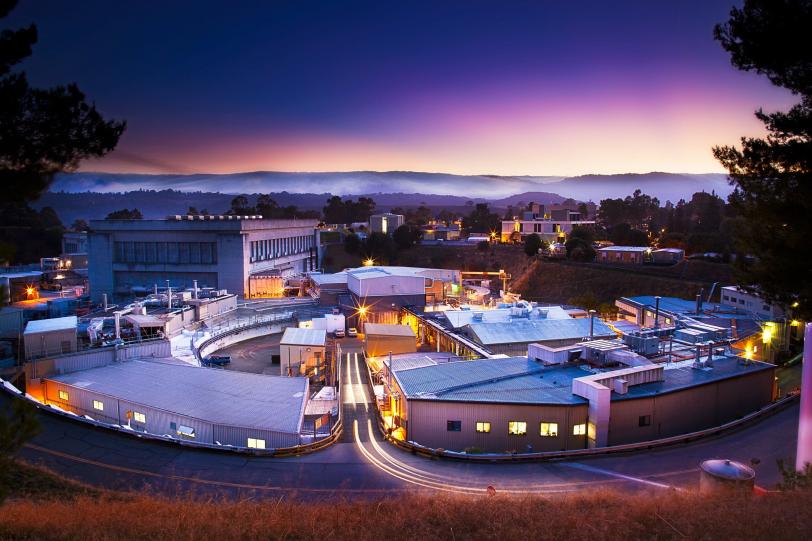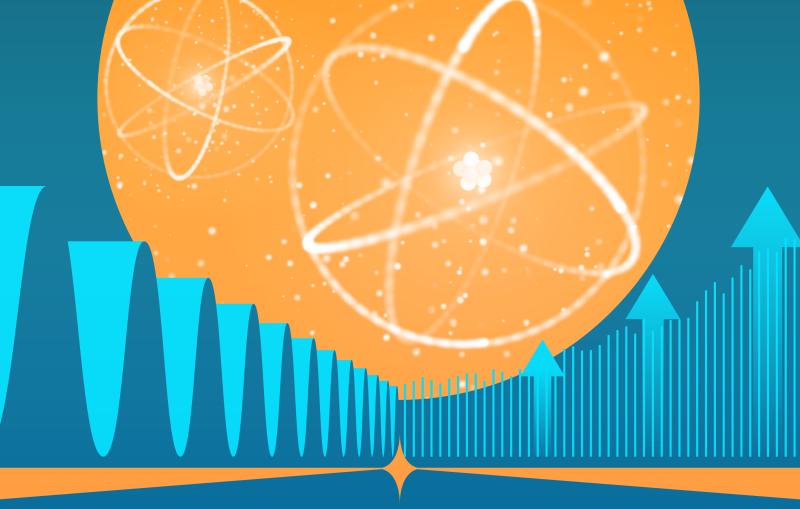AI learns physics to optimize particle accelerator performance
Teaching machine learning the basics of accelerator physics is particularly useful in situations where actual data don’t exist.
By Manuel Gnida
Machine learning, a form of artificial intelligence, vastly speeds up computational tasks and enables new technology in areas as broad as speech and image recognition, self-driving cars, stock market trading and medical diagnosis.
Before going to work on a given task, machine learning algorithms typically need to be trained on pre-existing data so they can learn to make fast and accurate predictions about future scenarios on their own. But what if the job is a completely new one, with no data available for training?

Now, researchers at the Department of Energy’s SLAC National Accelerator Laboratory have demonstrated that they can use machine learning to optimize the performance of particle accelerators by teaching the algorithms the basic physics principles behind accelerator operations – no prior data needed.
“Injecting physics into machine learning is a really hot topic in many research areas – in materials science, environmental science, battery research, particle physics and more,” said Adi Hanuka, a former SLAC research associate who led a study published in Physical Review Accelerator and Beams. This is one of the first examples of using physics-informed machine learning in the accelerator physics community.
Educating AI with physics
Accelerators are powerful machines that energize beams of electrons or other particles for use in a wide range of applications, including fundamental physics experiments, molecular imaging and radiation therapy for cancer. To obtain the best beam for a given application, operators need to tune the accelerator for peak performance.
When it comes to large particle accelerators this can be very challenging because there are so many components that need to be adjusted. What further complicates things is that not all components are independent, meaning that if you adjust one, it can affect the settings for another.
Recent studies at SLAC have shown that machine learning can greatly support human operators by speeding up the optimization process and finding useful accelerator settings that nobody has thought of before. Machine learning can also help diagnose the quality of particle beams without interfering with them, as other techniques usually do.
For these procedures to work, researchers first had to train the machine learning algorithms with data from previous accelerator operations, computer simulations that make assumptions about the accelerator’s performance, or both. However, they also found that using information from physics models combined with available experimental data could dramatically decrease the amount of new data required.
The new study demonstrates that prior data are, in fact, not needed if you know enough about the physics that describes how an accelerator works.
The team used this approach to tune SLAC’s SPEAR3 accelerator, which powers the lab’s Stanford Synchrotron Radiation Lightsource (SSRL). By using information obtained directly from physics-based models, they got results that were just as good, if not better, as those achieved by training the algorithm with actual archival data, the researchers said.
“Our results are the latest highlight of a progressive push at SLAC to develop machine learning tools for tuning accelerators,” said SLAC staff scientist Joe Duris, the study’s principal investigator.
Predicting the unknown
That’s not to say that pre-existing data are not helpful. They still come in handy even if you have your physics down. In the SPEAR3 case, the researchers were able to further improve the physics-informed machine learning model by pairing it with actual data from the accelerator. The team is also applying the method to improve tuning of SLAC’s Linac Coherent Light Source (LCLS) X-ray laser, one of the most powerful X-ray sources on the planet, for which archival data are available from previous experimental runs.
The full potential of the new method will probably become apparent when SLAC crews turn on LCLS-II next year. This superconducting upgrade to LCLS has a brand-new accelerator, and its best settings need to be determined from scratch. Its operators may find it convenient to have AI by their side that has already learned some basics of accelerator physics.
Funding came from a DOE Laboratory Directed Research and Development (LDRD) program at SLAC and DOE’s Office of Science (SC). LDRD and SC funded separate projects that both contributed to these results. Additional research contributions came from the University of Cambridge, UK. SSRL and LCLS are Office of Science user facilities.
Citation: Adi Hanuka et al., Physical Review Accelerators and Beams, 8 July 2021 (10.1103/PhysRevAccelBeams.24.072802)
For questions or comments, contact the SLAC Office of Communications at communications@slac.stanford.edu.
About SLAC
SLAC National Accelerator Laboratory explores how the universe works at the biggest, smallest and fastest scales and invents powerful tools used by researchers around the globe. As world leaders in ultrafast science and bold explorers of the physics of the universe, we forge new ground in understanding our origins and building a healthier and more sustainable future. Our discovery and innovation help develop new materials and chemical processes and open unprecedented views of the cosmos and life’s most delicate machinery. Building on more than 60 years of visionary research, we help shape the future by advancing areas such as quantum technology, scientific computing and the development of next-generation accelerators.
SLAC is operated by Stanford University for the U.S. Department of Energy’s Office of Science. The Office of Science is the single largest supporter of basic research in the physical sciences in the United States and is working to address some of the most pressing challenges of our time.





